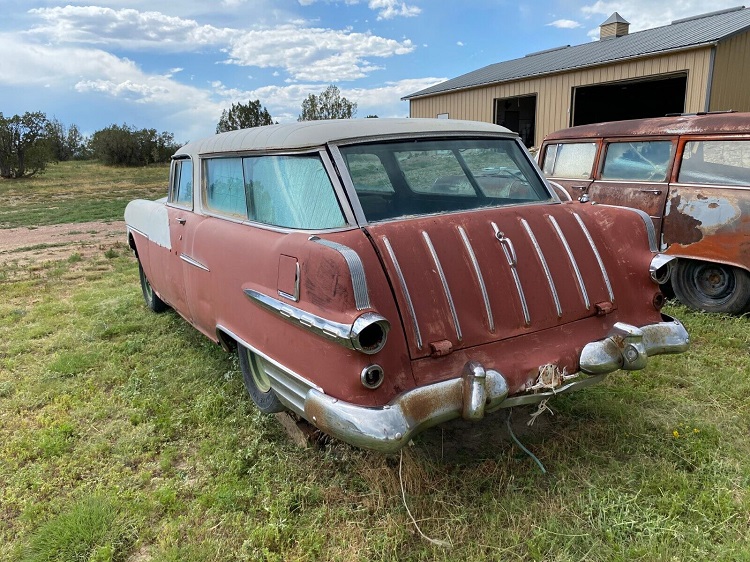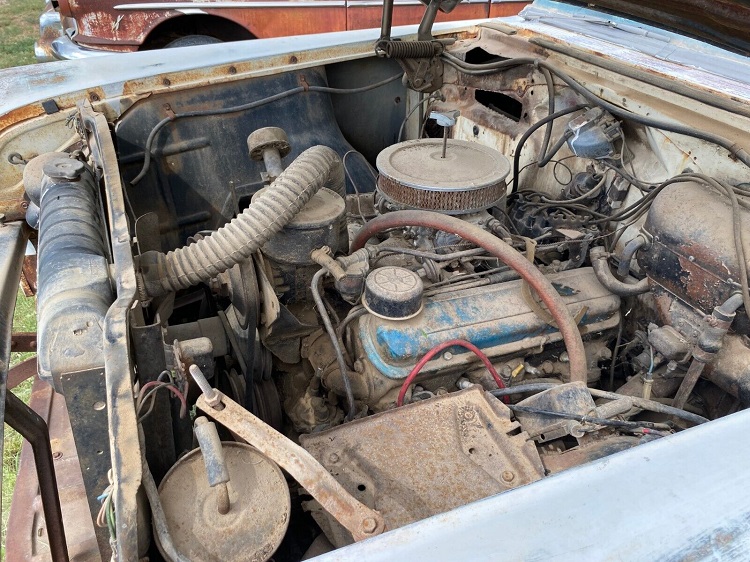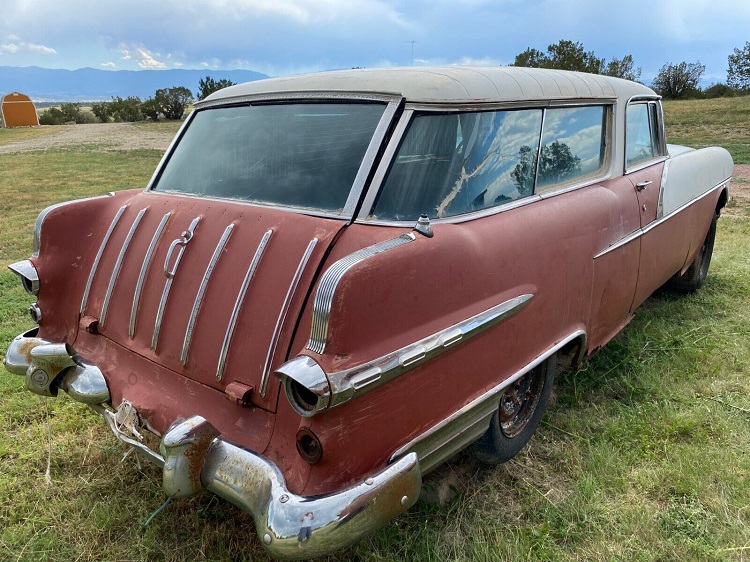Built from 1955 to 1957, the Chevrolet Tri-Five is arguably one of the prettiest automotive designs of the 1950s. And not surprisingly, the range-topping Bel Air versions are hugely popular and quite expensive nowadays, despite not being all that rare. But even though Chevrolet sold about five million examples over three model years, the Tri-Five line spawned a few scarce models.

The Nomad, a two-door station wagon, is arguably the rarest. Chevrolet sold only 22,897 grocery getters from 1955 to 1957, less than 0.5% of total Tri-Five production. And since 1950s cars usually have a terrible survival rate, far fewer units have soldiered on into 2023. But if you’re a fan of 1950s two-door stations wagons, there’s an even rarer version of the Nomad.
It’s called the Safari, and it wears a Pontiac badge. Built alongside its Chevrolet twin, the Safari shared its wheelbase with the Nomad, while its exterior was based on the contemporary Chieftain. However, because it features the shorter wheelbase version of the A-body chassis, Pontiac assigned the Safari to the B-body Star Chief series. Intricate corporate decisions aside, the Safari was Pontiac’s least popular model from 1955 to 1957.

Even though it came with some fancy trim, a comfy interior, and a 287-cubic-inch (4.7-liter) V8 rated at up to 200 horsepower, the two-door wagon found only 3,760 customers in its first year in dealerships. Upgraded to a 317-cubic-inch (5.2-liter) mill good for up to 285 horses, the Safari was slightly more popular in 1956, but it remained the company’s lowest-produced nameplate with just 4,042 examples.
In 1957, Pontiac once again upgraded the wagon under the hood, giving it a 347-cubic-inch (5.7-liter) V8 capable of 270 and 290 horsepower. The beefier lump and the visual refresh didn’t help, though; sales dropped to only 1,294 vehicles. In all, the first-gen Safari moved only 9,096 units. Sadly, fewer than half of these grocery getters are still around today, and most surviving examples are in poor condition. The 1956 Safari you see here is one of them.
Manufactured in Kansas City and initially sold in North Dakota, the station wagon spent a lot of time off the road. The car has been sitting in Colorado since 2005, but it’s clearly been parked much sooner than that. Based on the way it looks, it hasn’t been driven for at least 40 years.

Not surprisingly, the car is both rusty and incomplete. Sure, there isn’t much rust to worry about, but the lower body panels will need a lot of work to come back to life. And that’s based on a quick inspection on the outside. Fortunately enough, the chassis appears to be sound. The interior is pretty much toast. The leather on the seats is no longer usable, while the dashboard spent way too much time in the scorching sun.
The good news? Well, it still has the 317-cubic-inch V8 under the hood, and it left the factory with a few appealing options, including air conditioning and six-way front seats. The owner also claims this wagon is one of only 302 1956 Safaris that still exist, but he doesn’t mention a source for this bit of information. If true, that’s a survival rate of less than 10%. But even if it isn’t true, this Safari is still a rare classic that deserves to be saved.
If you’re brave enough to tackle such a difficult task, this grocery-getter from Westminster, Colorado, is going under the hammer as we speak.
